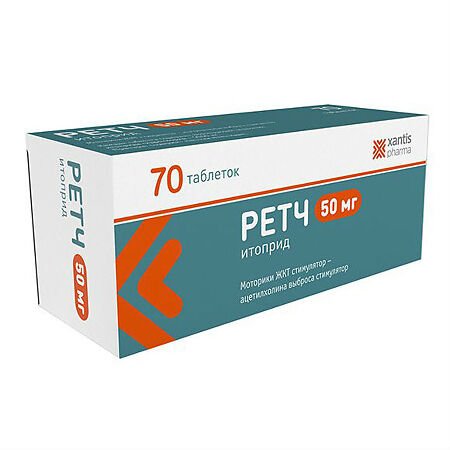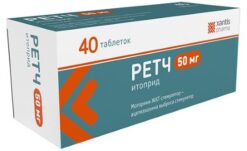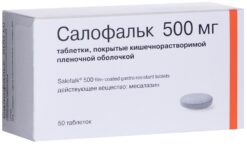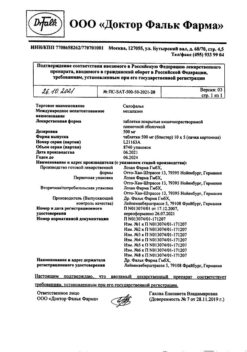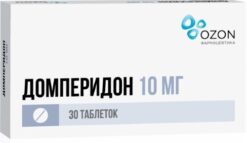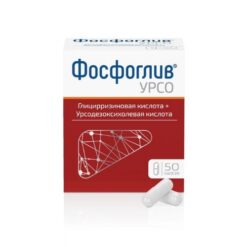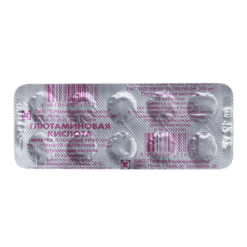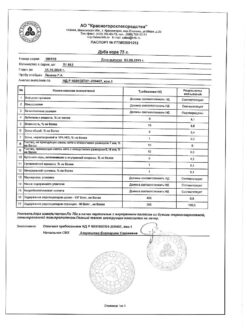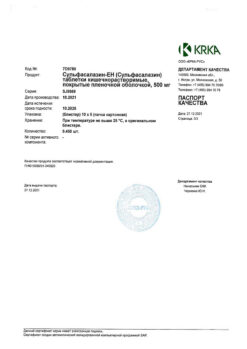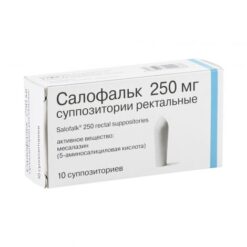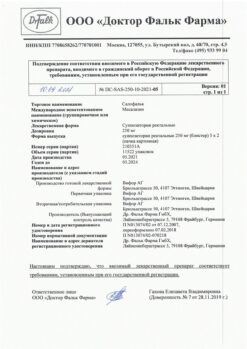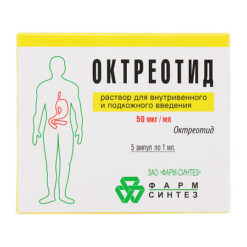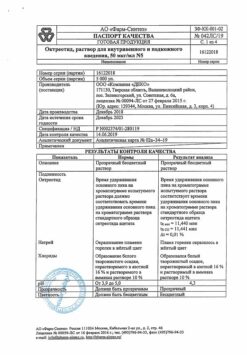No products in the cart.
Retch, tablets 50 mg 70 pcs
€19.37 €16.14
Description
Gastrointestinal motility stimulator – acetylcholine release stimulator.
Pharmacokinetics
Intake
It is rapidly and almost completely absorbed in the gastrointestinal tract. Its relative bioavailability is 60%, which is due to metabolism during first passage through the liver.
The maximum plasma concentration (Cmax) of 0.28 mcg/ml, after 50 mg of the drug, is reached in 0.5-0.75 h
In repeated oral administration of the drug at a dose of 50-200 mg three times daily for 7 days, the pharmacokinetics is linear and cumulation is minimal.
Distribution
Binding to plasma proteins is 96%, mostly to albumin. Binding to alpha1-acid glycoprotein is less than 15%.
It is actively distributed in the tissues (volume of distribution 6.1 l/kg) and found in high concentrations in the kidneys, small intestine, liver, adrenal glands and stomach. In therapeutic doses it slightly penetrates into brain and spinal cord, into breast milk.
Metabolism
Metabolized in the liver. Three metabolites have been identified, one of which has negligible activity that has no pharmacological significance (approximately 2-3% of that of itoprid). The primary metabolite in humans is N-oxide, which is formed by oxidation of the quaternary amino-N-dimethyl group.
It is metabolized under the action of flavin-dependent monooxygenase (FMO3). The number and efficiency of human isoenzymes may vary depending on the genetic polymorphism, which in rare cases leads to the development of an autosomal recessive condition known as trimethylaminuria (fish odor syndrome).
In patients with trimethylaminuria, the half-life of the drug is prolonged.
The drug has no inhibitory or inducing effect on CYP2C19 and CYP2E1. The use of etopride has no effect on the activity of uridine diphosphate glucuronidyltransferase.
Itopride and its metabolites are excreted by the kidneys. Renal excretion of itopride and its N-oxide after a single oral administration of the drug in therapeutic doses in healthy subjects was 3.7% and 75.4%, respectively.
The half-life of the drug (T1/2) is 6 hours.
Pharmacodynamics
It increases motility of gastrointestinal tract (GIT) due to antagonism of D2-dopamine receptors and inhibition of acetylcholinesterase. It activates the release of acetylcholine and inhibits its degradation.
It has antiemetic effect due to interaction with D2-receptors located in the trigger zone. Causes dose-dependent suppression of apomorphine-induced vomiting.
Activates propulsive gastric motility through antagonism by D2-receptors and dose-dependent inhibition of acetylcholinesterase activity.
The action of the drug in patients with functional dyspepsia leads to a decrease in the severity of symptoms (overall patient evaluation, postprandial abdominal heaviness, early satiety).
The use of itopride in patients with diabetic gastroparesis promoted faster evacuation of liquid and solid food from the stomach.
In patients with gastroesophageal reflux disease (GERD), itopride reduces the number of transient relaxations of the lower esophageal sphincter and reduces the duration of time with high esophageal acidity (pH
It has a specific effect on the smooth muscles of the gastrointestinal tract, accelerating gastric transit and improving gastric emptying. It does not affect serum concentrations of gastrin.
Indications
Indications
Used to treat gastrointestinal symptoms associated with impaired gastric motility or delayed emptying, such as bloating, early satiety, feeling of fullness in the stomach after eating, pain or discomfort in the epigastric region, decreased appetite, heartburn, nausea and vomiting; functional (non-ulcer) dyspepsia or chronic gastritis.
Pharmacological effect
Pharmacological effect
Gastrointestinal motility stimulator – acetylcholine release stimulator.
Pharmacokinetics
Suction
Quickly and almost completely absorbed into the gastrointestinal tract. Its relative bioavailability is 60%, which is associated with first-pass metabolism through the liver.
The maximum plasma concentration (Cmax) is 0.28 mcg/ml, after taking 50 mg of the drug, achieved after 0.5-0.75 hours
When the drug is taken orally again at a dose of 50-200 mg three times a day for 7 days, the pharmacokinetics are linear and accumulation is minimal.
Distribution
Binds to plasma proteins by 96%, mainly to albumin. Binding to alpha1-acid glycoprotein is less than 15%.
Actively distributed in tissues (volume of distribution 6.1 l/kg) and found in high concentrations in the kidneys, small intestine, liver, adrenal glands and stomach. In therapeutic doses, it slightly penetrates into the brain and spinal cord and into breast milk.
Metabolism
Metabolized in the liver. 3 metabolites have been identified, one of which exhibits minor activity that has no pharmacological significance (approximately 2-3% of that of itopride). The primary metabolite in humans is N-oxide, which is formed as a result of oxidation of the quaternary amino-N-dimethyl group.
Metabolized by flavin-dependent monooxygenase (FMO3). The number and effectiveness of human isoenzymes may vary due to genetic polymorphisms, which in rare cases lead to the development of an autosomal recessive condition known as trimethylaminuria (fishy odor syndrome).
In patients with trimethylaminuria, the half-life of the drug increases.
The drug does not have an inhibitory or inducing effect on CYP2C19 and CYP2E1. The use of itopride does not affect the activity of uridine diphosphate glucuronyl transferase.
Removal
Itopride and its metabolites are excreted by the kidneys. Renal excretion of itopride and its N-oxide after a single oral dose of the drug in therapeutic doses in healthy people was 3.7 and 75.4%, respectively.
The half-life of the drug (T1/2) is 6 hours.
Pharmacodynamics
Strengthens the motility of the gastrointestinal tract (GIT) due to antagonism of D2-dopamine receptors and inhibition of acetylcholinesterase. Activates the release of acetylcholine and inhibits its destruction.
It has an antiemetic effect due to interaction with D2 receptors located in the trigger zone. Causes dose-dependent suppression of apomorphine-induced vomiting.
Activates propulsive gastric motility through antagonism of D2 receptors and dose-dependent inhibition of acetylcholinesterase activity.
The effect of the drug in patients with functional dyspepsia leads to a decrease in the severity of symptoms (general assessment by the patient, postprandial heaviness in the abdomen, early satiety).
The use of itopride in patients with diabetic gastroparesis helped to accelerate the evacuation of liquid and solid food from the stomach.
In patients with gastroesophageal reflux disease (GERD), itopride reduces the number of transient relaxations of the lower esophageal sphincter and reduces the length of time with high esophageal acidity (pH).
It has a specific effect on the smooth muscles of the gastrointestinal tract, accelerates transit through the stomach and improves its emptying. Does not affect serum gastrin concentrations.
Special instructions
Special instructions
Itopride enhances the effect of acetylcholine and may cause cholinergic side effects.
Patients with impaired liver or kidney function should be closely monitored by a physician; if necessary, the dose of the drug should be reduced or therapy with the drug should be discontinued.
If symptoms of galactorrhea and gynecomastia occur, treatment should be interrupted or completely stopped.
Impact on the ability to drive vehicles and operate machinery
No studies have been conducted on the effect of itopride on the ability to drive a car or use machinery.
However, during treatment with the drug, caution should be exercised when performing potentially hazardous activities that require increased concentration and speed of psychomotor reactions (driving vehicles, working with moving mechanisms, working as a dispatcher and operator), since the use of the drug can cause dizziness.
Active ingredient
Active ingredient
Itopride
Composition
Composition
1 tab.:
active ingredient:
itopride hydrochloride 50.00 mg;
excipients:
lactose monohydrate 65.56 mg,
pregelatinized starch 1.20 mg,
croscarmellose sodium 1.20 mg,
colloidal silicon dioxide anhydrous 0.84 mg,
magnesium stearate 1.20 mg.
Pregnancy
Pregnancy
Pregnancy
There is insufficient data on the use of itopride hydrochloride in pregnant women. Use during pregnancy is only possible when there is no alternative therapy and the potential benefit to the mother outweighs the potential risk to the fetus.
Breastfeeding period
There is a potential risk of adverse reactions in a nursing infant, and there is also evidence of itopride being excreted in milk in rats. If it is necessary to take it during lactation, breastfeeding should be stopped.
Contraindications
Contraindications
Hypersensitivity to itopride or any auxiliary component of the drug; patients with gastrointestinal bleeding, mechanical obstruction, or perforation; children’s age (up to 16 years); pregnancy and lactation; lactase deficiency, lactose intolerance, glucose-galactose malabsorption.
Prescribe with caution to patients for whom the development of cholinergic adverse reactions (associated with increased action of acetylcholine during drug therapy) may aggravate the course of the underlying disease; patients with impaired liver and kidney function; elderly patients.
Side Effects
Side Effects
World Health Organization (WHO) classification of the frequency of adverse reactions by frequency of development: very common (≥ 1/10), common (≥ 1/100 and
Disorders of the blood and lymphatic system: infrequently – leukopenia, frequency unknown – thrombocytopenia.
Immune system disorders: rarely – skin hyperemia, skin itching, rash, frequency unknown – anaphylactoid reactions.
Endocrine system disorders: uncommon – hyperprolactinemia, frequency unknown – gynecomastia.
Nervous system disorders: uncommon – dizziness, headache, sleep disturbance, irritability, frequency unknown – tremor.
Gastrointestinal disorders: uncommon – diarrhea, constipation, abdominal pain, increased salivation, frequency unknown – nausea, jaundice.
Musculoskeletal and connective tissue disorders: uncommon – chest or back pain.
Impact on the results of laboratory and instrumental studies: infrequently – increased levels of creatinine and urea nitrogen in the blood (BUN), frequency unknown – increased activity of aspartate aminotransferase (ACT), alanine aminotransferase (ALT), gammaglutamyl transpeptidase, alkaline phosphatase and bilirubin levels.
Other: infrequently – fatigue.
Interaction
Interaction
No interaction was found when itopride was taken concomitantly with warfarin, diazepam, diclofenac, ticlopidine, nifedipine and nicardipine.
Metabolic interaction at the level of isoenzymes of the CYP450 system is not expected, since the metabolism of itopride occurs mainly through flavin monooxygenase.
Itopride increases gastric motility, which may affect the absorption of drugs when used together orally. Particular caution should be exercised when taking drugs with a narrow therapeutic index, drugs with prolonged release of the active substance or drugs with enteric coating.
Antiulcer drugs such as cimetidine, ranitidine, teprenone and cetraxate do not affect the prokinetic efficacy of itopride.
M-anticholinergic agents reduce the effectiveness of itopride.
The cholinergic effect of itopride may be increased with simultaneous use of M-cholinomimetics, as well as cholinesterase inhibitors.
Overdose
Overdose
Cases of overdose in humans have not been described.
In case of overdose, gastric lavage and symptomatic therapy are indicated.
Manufacturer
Manufacturer
Saneka Pharmaceuticals a.s., Slovakia
Additional information
| Manufacturer | Saneka Pharmaceuticals a.s., Slovakia |
|---|---|
| Medication form | pills |
| Brand | Saneka Pharmaceuticals a.s. |
Other forms…
Related products
Buy Retch, tablets 50 mg 70 pcs with delivery to USA, UK, Europe and over 120 other countries.

